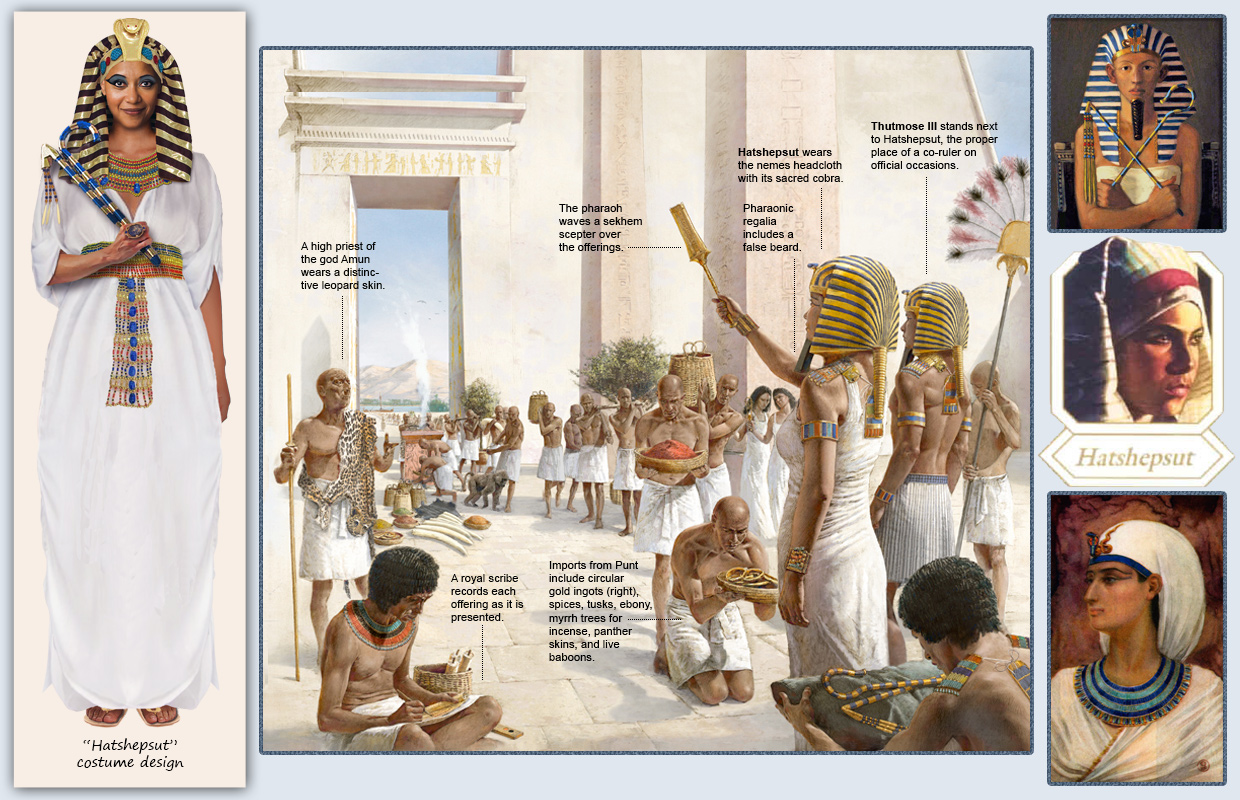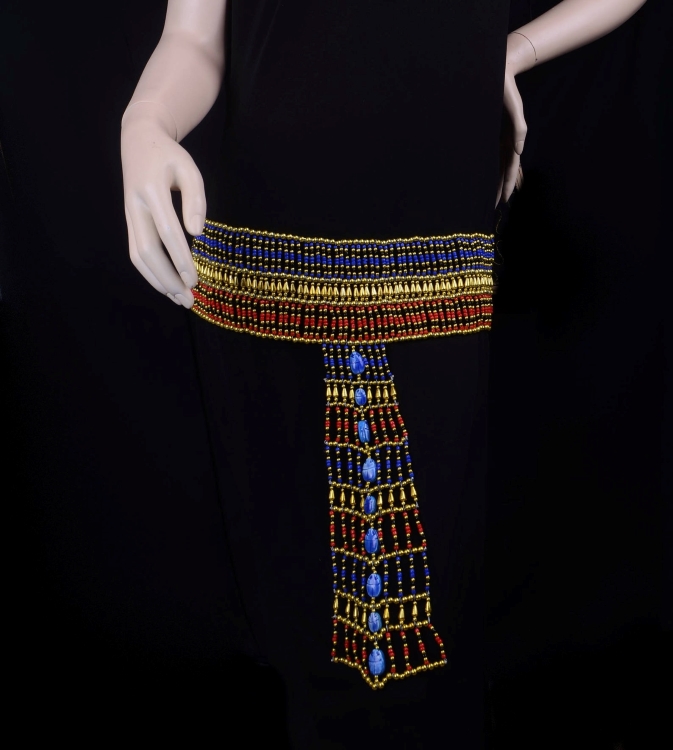Hatshepsut (ca. 1508-1458 BCE) was an extremely successful pharaoh whose reign was full of accomplishments: important trade missions, gorgeous architecture, a booming economy. But the thing she’s most famous for, at least nowadays, is that she had herself depicted as male on her monuments. There she is, King Hatshepsut, striding across the ancient bas reliefs with her broad shoulders and her beard……it’s a little weird until you understand what’s going on. The role of pharaoh was gendered male in ancient Egypt, and Hatshepsut was just assuming the badges of office. She wasn’t pretending to be personally male, and the texts unmistakably refer to her as female: “she” is the beloved “daughter” of Amun, destined to rule, and so forth. But Egyptian iconography and religion called for the pharaoh to have a male form, and so Hatshepsut had herself depicted with beard, kilt, the whole bit.

That was just for the official portraits, though. In real life Hatshepsut dressed as a woman, probably just adding the regalia that would mark her as pharaoh: a nemes headdress, a crook and flail. We suggest you do the same for the costume. The pieces we suggest, from left to right:
1. White dress from Lotustraders. This is a sleeved caftan-like gown that evokes the drapery styles of Egypt’s Eighteenth Dynasty. The ingenious design has drawstrings at the waist, sleeves, and hemline to give you a perfectly customized fit.
2. Pharaoh’s nemes headdress. This is important, since it’s what makes you Hatshepsut as opposed to, say, Nefertiti or Cleopatra. The nemes was a striped headcloth designed to cover the hair completely. The black-and-gold headdress we used for our costume (which we put together years ago) has now been discontinued by the manufacturer, so the link goes to a blue-and-gold version we found.
3. Crook and flail. Isn’t this awesome? This artist actually makes costume replicas of the Egyptian crook and flail. These were the pharaoh’s special symbols of office, signifying his (or her) role as shepherd of the people and provider of grain.
4. Egyptian collar-style beaded necklace. This necklace is actually from Egypt, so make sure you allow enough time for shipping. That Etsy store offers many other styles as well.
5. Egyptian beaded belt with front panel. From that same Etsy store.
6. Blue scarab ring. As pharaoh, Hatshepsut would have worn a large signet ring. The Egyptian Revival scarab ring we originally used for our costume was an old one-of-a-kind piece of costume jewelry, but you can usually find something similar by hunting on Etsy or eBay.
Makeup: You’ll want to do dramatic eye makeup, with industrial-strength eyeliner and the lines drawn all the way out to your temples. There are a plethora of YouTube videos and instructionals out there. We chose blue eyeshadow to match the accents in the other costume pieces.
Making your own dress: If you would prefer to make your own Egyptian dress, this page has excellent information.
Shoes: We know from King Tut’s tomb that pharaohs had gold thong-style sandals. Something like these Rampage Oliver sandals would work:

Illustration credits: The large central illustration is by Fernando G. Baptista and Amanda Hobbs for National Geographic; it depicts Hatshepsut receiving the riches of Punt. We don’t know the provenance of the top portrait on the right, but the middle one is by Dean Mitchell for Anheuser Busch and the bottom one is by Winifred Brunton.


















